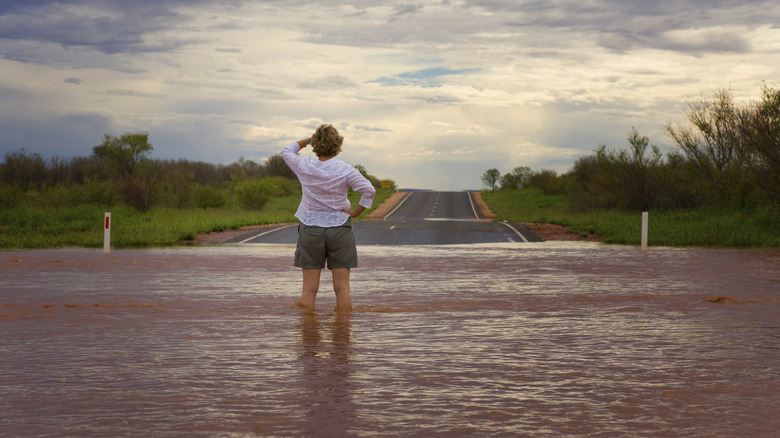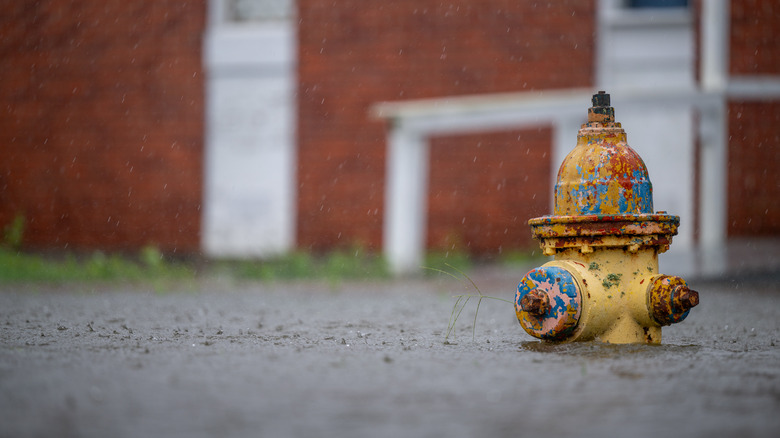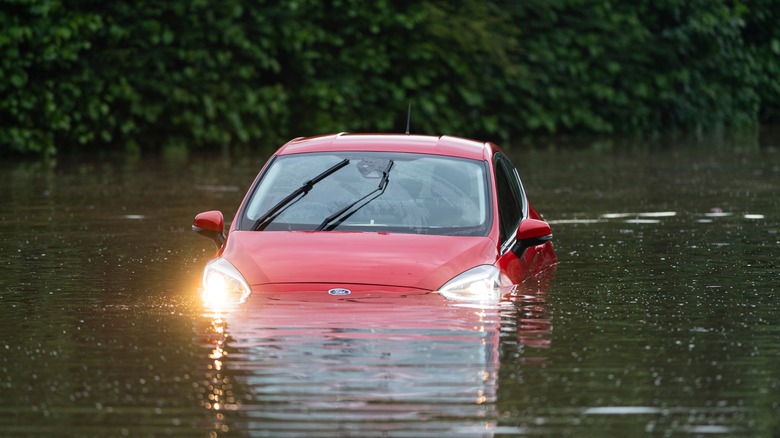What To Know About Flash Flooding And Our Top Tips For Staying Safe
While nature offers an endless amount of beauty and inspiration it also has a dark and destructive side, whether that is through poisonous plants and venomous critters or sudden natural disasters like wildfires, avalanches, or floods. In fact, according to the World Health Organization, floods are the most common type of natural disaster and are only getting worse and happening more often. Because of this, it is important to understand how floods form and what you should do to stay safe if you ever experience one.
In particular, flash floods are the most dangerous type of flood because they can happen anywhere in the country and sometimes develop extremely quickly (even if you are miles away from the storm that caused it). Furthermore, flash floods involve very fast-moving water that is strong enough to rip out trees, move boulders, sweep away cars, and even destroy homes and buildings. The unexpectedness of a flash flood coupled with its strength and intensity makes this type of disaster particularly deadly. In fact, according to the National Weather Service, flash floods are the "number one weather-related killer in the United States."
What causes flash floods and where they are most likely to happen
In general, flash floods are caused by a lot of rainfall over a short period of time. This is particularly common after tropical storms or hurricanes because most infrastructure is not built to handle such high levels of stormwater. However, flash floods aren't only caused by intense storms and can also be caused by slow-moving thunderstorms that drop a lot of water in the same area or by a series of storms that go over the same place again and again.
While flash floods can happen anywhere, they are most likely to occur in low-lying areas, places near mountainous streams and rivers, in urban and highly developed areas where the concrete and hard surfaces don't allow water to seep into the ground, and in specific naturally occurring landforms like canyons. In fact, slot canyons — which are particular narrow with high walls — are very susceptible to dangerous flash flooding which is why one trail in Zion National Park is often closed by park officials.
Even if you don't live in a high flood-risk area, it is important to pay attention to weather alerts during and after storms. If you are ever under a flash flood watch, you should pack a "go bag" and make a plan to evacuate to higher ground should a flood take place. If you are out hiking or adventuring in areas that have a flood risk, you can consider downloading a few safety apps that will help you better reach rescue services and find your way to safety in an emergency.
What to do during a flash flood
If your area is under a flash flood warning, that means that a flash flood will occur and you should gather your necessary belongings and immediately get to higher ground. As you move to higher ground, it is essential to remember that you should never cross flood waters no matter how shallow the water appears to be. This is because flowing water is much stronger than it seems. In fact, according to CBS News, six inches of water can knock a person off their feet and carry them away while water as little as a foot deep can sweep away a car. So, if the flood is crossing your path to higher ground, it is important to turn back and find another way to safety.
If you are caught in your house when the flood arrives, you should try and move to a higher floor (as long as it has windows you can escape from). Another good option is to get on the roof. If you are carried away by a flash flood while in your car, it is important to immediately roll down your car windows. This is necessary because it provides an escape route if the water rises. If possible, the best thing to do if you are swept away in a car is to stay inside; however, if the water is rising inside the car, you should get on the roof.
If you are caught in flood waters while on foot or outdoors hiking, try to grab onto something or climb something large and heavy like a large tree or boulder. It is essential that you try to keep your footing and not get swept away. If you are swept away by the flood, you will want to swim perpendicular to the current until you reach safety.


